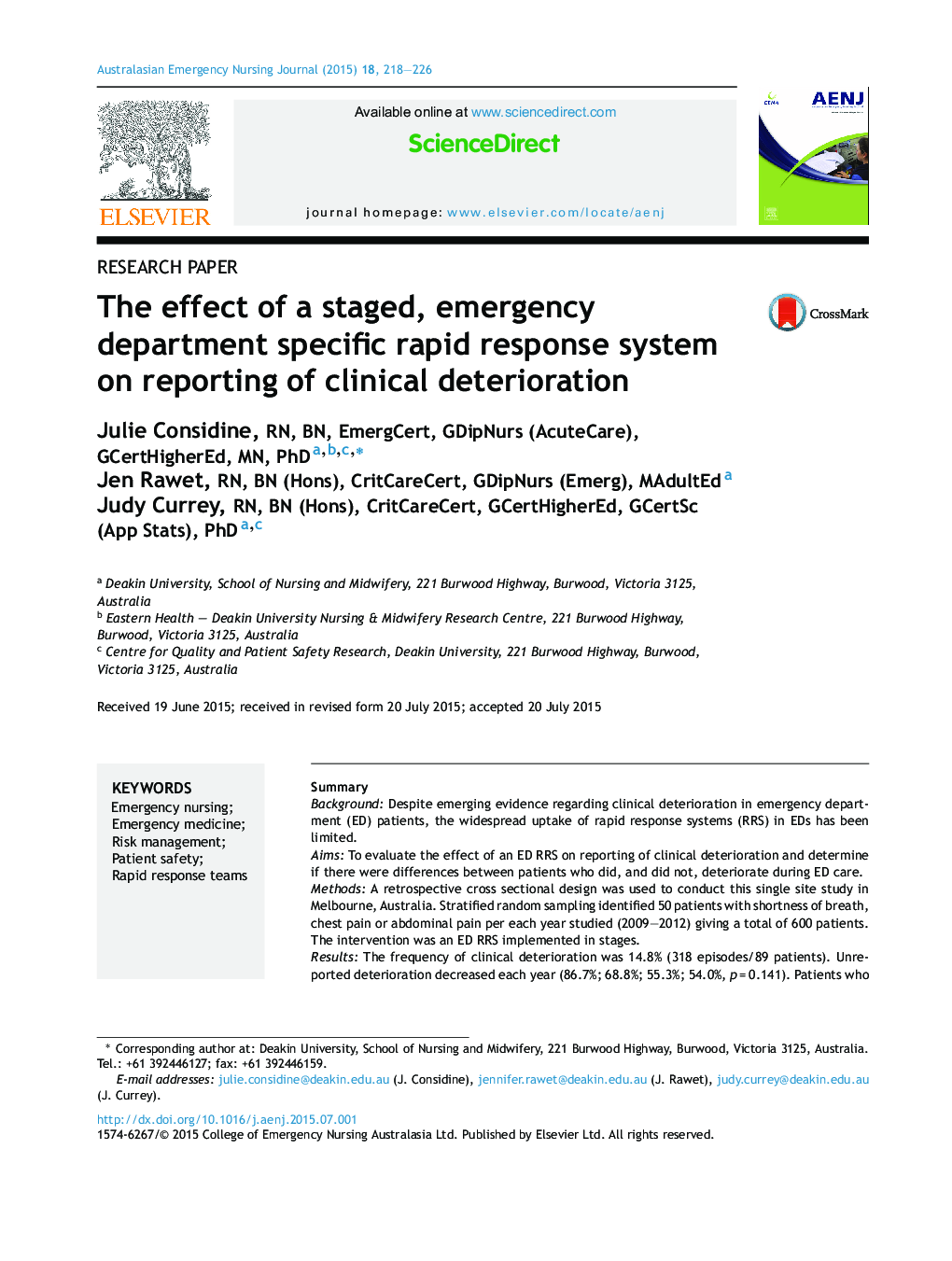| Article ID | Journal | Published Year | Pages | File Type |
|---|---|---|---|---|
| 2606090 | Australasian Emergency Nursing Journal | 2015 | 9 Pages |
SummaryBackgroundDespite emerging evidence regarding clinical deterioration in emergency department (ED) patients, the widespread uptake of rapid response systems (RRS) in EDs has been limited.AimsTo evaluate the effect of an ED RRS on reporting of clinical deterioration and determine if there were differences between patients who did, and did not, deteriorate during ED care.MethodsA retrospective cross sectional design was used to conduct this single site study in Melbourne, Australia. Stratified random sampling identified 50 patients with shortness of breath, chest pain or abdominal pain per each year studied (2009–2012) giving a total of 600 patients. The intervention was an ED RRS implemented in stages.ResultsThe frequency of clinical deterioration was 14.8% (318 episodes/89 patients). Unreported deterioration decreased each year (86.7%; 68.8%; 55.3%; 54.0%, p = 0.141). Patients who deteriorated during ED care had a longer median ED length of stay (2.8 h; p < 0.001), were 31.9% more likely to need hospital admission (p < 0.001) and 4.9% more likely to die in hospital (p = 0.044).ConclusionsA staged ED specific RRS decreased the frequency of unreported clinical deterioration. Controlled multi-site studies of ED specific RRSs are needed to examine the effect of formal ED RRSs on patient outcomes.
